Japan, Take 2
I didn't get to see any fireflies this summer. That's actually quite a bummer I didn't realize til now (last week of Sept) that I also didn't get a chance to play with Hanabi (fireworks). These are two very rural Japanese things I didn't get to do because I was trying to hard to stay out of the heat and away from mosquitoes.
I'm too logical for my own good a lot of times.
One of my housemates family business is magazine publishing, and she gave me a ticket to a rice-planting ceremony that her father always gets invited to every year. It was at the Sumiyoshi Taisha Shrine in Osaka, and the ticket allowed one entrance into the private (I'm assuming) rice wine ceremony, and came with a bento lunch and a gift box of traditional Japanese sweets.
June 10 - 15 腐草為螢 Fireflies rise from the Rotten Grass
June 14, 2018
|
Osaka
I didn't get to see any fireflies this summer. That's actually quite a bummer I didn't realize til now (last week of Sept) that I also didn't get a chance to play with Hanabi (fireworks). These are two very rural Japanese things I didn't get to do because I was trying to hard to stay out of the heat and away from mosquitoes.
I'm too logical for my own good a lot of times.
One of my housemates family business is magazine publishing, and she gave me a ticket to a rice-planting ceremony that her father always gets invited to every year. It was at the Sumiyoshi Taisha Shrine in Osaka, and the ticket allowed one entrance into the private (I'm assuming) rice wine ceremony, and came with a bento lunch and a gift box of traditional Japanese sweets.
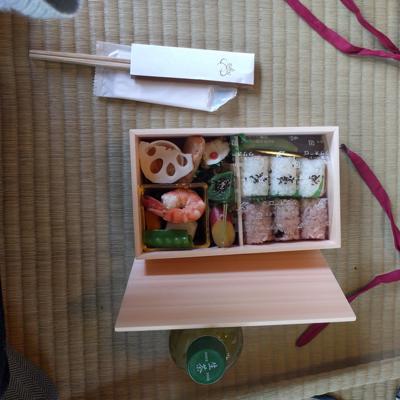
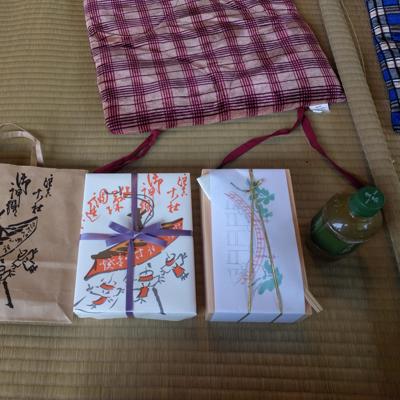
Private meant friends and family and special guests, I think. It felt like that type of crowd, and I definitely felt a little out of place, but that's ok! I'm used to going to things alone! ALL THE TIME.
And since it was in a hall-like covered space, I also got to see the shrine maidens get dressed for the afternoon public procession to the shrine. Out of decency I didn't take photos of them being dressed, but it was interesting to see it happen, and just like I've always been told, there were two dressers, one responsible for the front and one for the back, and it was done so smoothly. The last thing to go on were their massively tall stove-pipe-like hats, and it was kind of amusing watching the girls have to squat to get through parts of the roof without losing the hat.
I was essentially in the green room area of the shrine compound, where the dancers and kids gathered and got ready before heading out as a parade to the altar part of the shrine, and then out to the rice field portion to do their dance around the field while the farmers planted the ceremonial rice field behind the shrine.
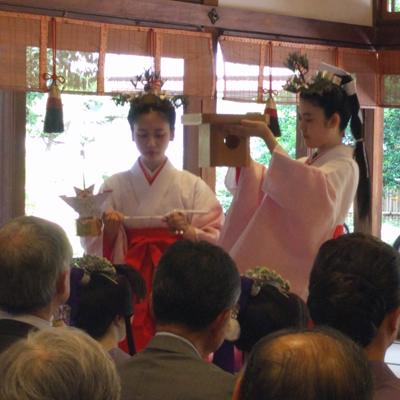
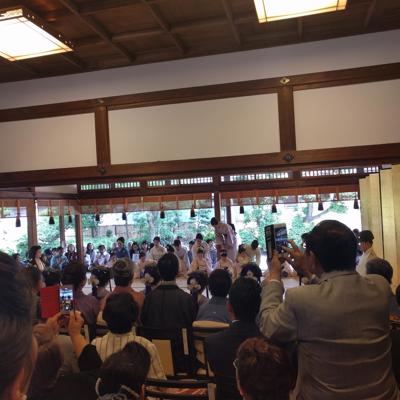
There were definitely lots of standing viewers, but my ticket included access to covered seating and I got to watch a bunch of young boys enact a mock battle-dance, and a bunch of young girls dancing around the perimeter of the rice field.
The farmers had tabi galoshes! It amuses me that they would feel the need to make rain boots with a separated big toe. What is the purpose? It's not like you need to have the toe dexterity to keep the footwear on, like the thong on geta/zori/setta. When your foot is completely covered like in a boot, doesn't adding that extra toe separation just mean you have a new area to trap mud/dirt and therefore need to clean?
There was also a stage set up in the middle of the field, accessed by a long walkway. I took a lot of video of the dancing, so I have limited stills to show everything I experienced that day.
It was a 6 hr experience. By the end of the day, I was exhausted and all I did was sit and spectate. All in all, it was really fun to see, especially the ceremonial costumes, so up close. I honestly cannot

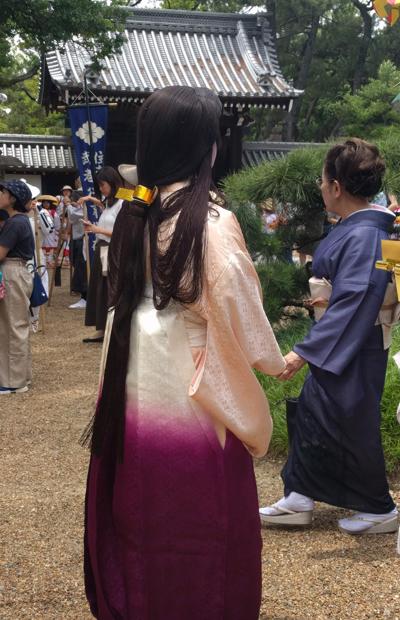
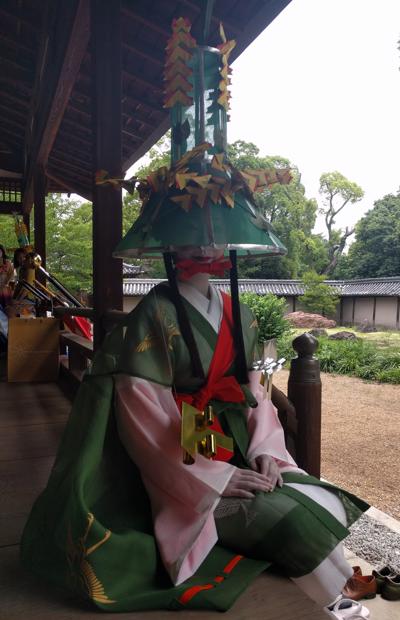

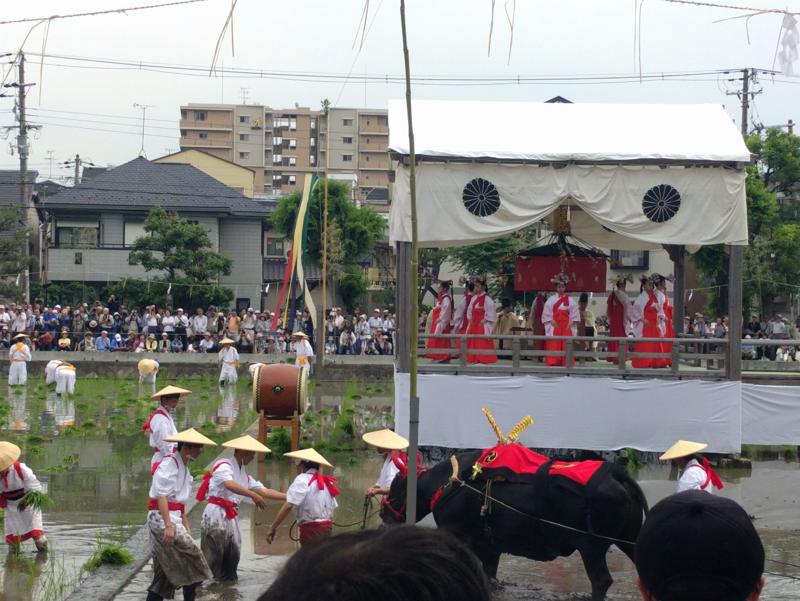
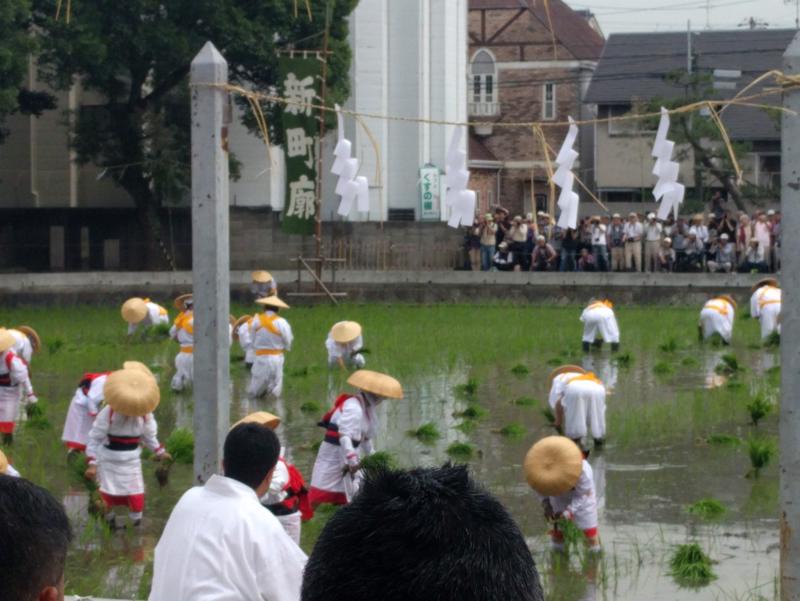
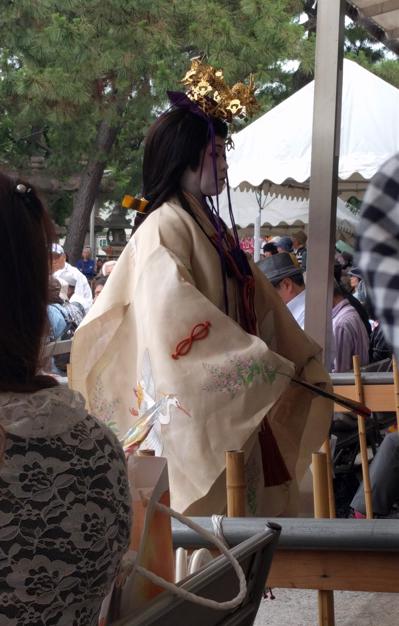
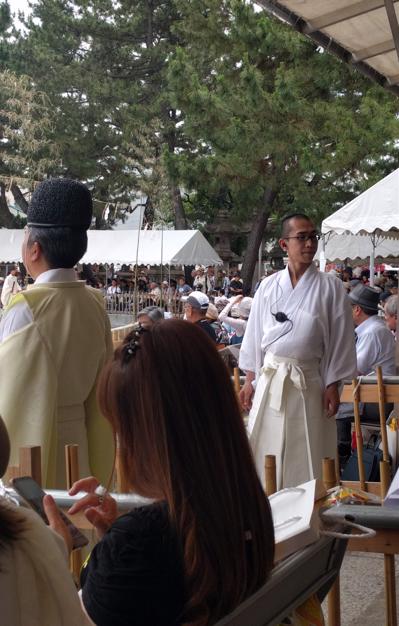
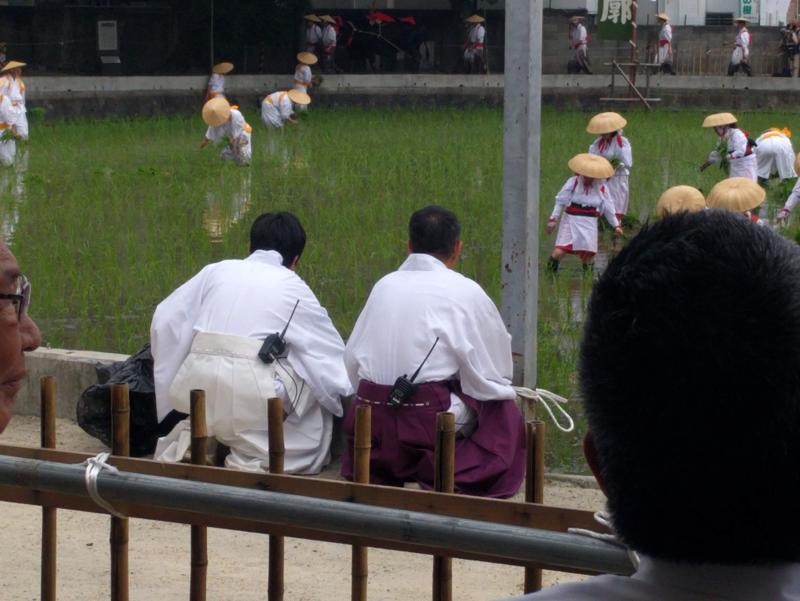
feel grateful enough to God for placing me in this share house where I've met this housemate who has allowed me to access things I never could have imagined.
My favourite part was seeing walkies hung on the hakama of the people in charge of running the show and schedules and paperwork stuffed in the front of the kimono, like a giant pocket. Traditional Japanese clothing should not hinder the process!
Also, sitting for 6 hrs is really tiring on the butt.
1.
Foreword
2.
72 Seasons of Japan: 雪下出麦 Beneath the Snow the Wheat Sprouts (January 1-5)
3.
Pheasants are like peacocks, right? 雉始雊 The Pheasant's First Calls (January 16-20)
4.
January 21-24 款冬華 The Butterbur flowers
5.
January 25-29 水沢腹堅 Mountain Streams Freeze
6.
January 30-February 3 鶏始乳 The Hens start laying eggs
7.
February 4-8 東風解凍 Spring winds thaw the ice
8.
February 9-13 黄鶯睍睆 The Nightingale Sings
9.
February 14-18 魚上氷 Fish Rise from the Ice
10.
February 19-23 土脉潤起 The Earth becomes Damp
11.
February 24-28 霞始靆 Haze First Covers the Sky
12.
March 1–5 草木萌動 Plants Show First Buds
13.
March 6–10 蟄虫啓戸 Hibernating Creatures Open their Doors
14.
March 11–15 桃始笑 The First Peach Blossoms
15.
March 16–20 菜虫化蝶 Leaf Insects become Butterflies
16.
March 21-25 雀始巣 The Sparrow Builds her Nest
17.
March 26-30 櫻始開 The First Cherry Blossoms
18.
March 31-April 4 雷乃発声 Thunder Raises its Voice
19.
April 5-9 玄鳥至 The Swallows Arrive
20.
April 10-14 鴻雁北 Geese Fly North
21.
April 15-19 虹始見 The First Rainbow Appears
22.
April 20-24 葭始生 The First Reeds Grow
23.
April 25-29 霜止出苗 The Frost Stops; The Rice Grows
24.
April 30- May 4 牡丹華 The Tree Peony Flowers
25.
May 5-9 蛙始鳴 The First Frogs Call
26.
May 10-14 蚯蚓出 The Earth Worms Rise
27.
May 15-20 竹笋生 Bamboo Shoots Appear
28.
May 21-25 蚕起食桑 The Silk Worm Awakes and Eats the Mulberry
29.
May 26-30 紅花栄 The Safflower Blossoms
30.
May 31-June 5 麦秋至 The Time for Wheat
31.
June 5 - June 9 蟷螂生 The Praying Mantis Hatches
32.
June 10 - 15 腐草為螢 Fireflies rise from the Rotten Grass
33.
June 16 - 20 梅子黄 The Plums turn Yellow
34.
June 21 - June 25 乃東枯 The common Self-Heal Dries (Summer Solstice)
35.
June 26 - June 30 菖蒲華 The Iris Flowers
36.
July 1 - July 6 半夏生 The Crow-dipper Sprouts
37.
July 7 - July 11 温風至 Hot Winds Blow
38.
July 12 - July 16 蓮始開 The First Lotus Blossoms
39.
July 17 - July 21 鷹乃学習 The Young Hawk Learns to Fly
40.
July 22 - July 27 桐始結花 The First Paulownia Fruit Ripen
41.
July 28 - Aug 1 土潤溽暑 Damp Earth Humid Heat (Major Heat)
42.
Aug 2 - Aug 6 大雨時行 Heavy Rain Showers
43.
Aug 7 - Aug 11 涼風至 A cool Wind blows (First Autumn)
44.
Aug 12 - Aug 16 寒蝉鳴 The Evening Cicada Sings
45.
Aug 17 - Aug 22 蒙霧升降 Thick Fog Blankets the Sky
46.
Aug 23 - Aug 27 綿柎開 The Cotton Lint Opens (Limit of Heat)
47.
Aug 28 - Sept 1 天地始粛 Earth & Sky Begin to Cool
48.
Sept 2 - Sept 6 禾乃登 The Rice Ripens
49.
Sept 7 - Sept 11 草露白 Dew Glistens White on Grass
50.
Sept 12 - Sept 16 鶺鴒鳴 Wagtails Sing
51.
Sept 17 - Sept 21 玄鳥去 Swallows Leave
52.
Sept 22 - Sept 27 雷乃収声 Thunder Ceases (Autumn Equinox)
53.
Sept 28 - Oct 2 蟄虫坏戸 Insects hole up Underground
54.
Oct 3 - Oct 7 水始涸 Farmers Drain Fields
55.
Oct 8 - Oct 12 鴻雁来 The Geese Arrive
56.
November 19
Share your travel adventures like this!
Create your own travel blog in one step
Share with friends and family to follow your journey
Easy set up, no technical knowledge needed and unlimited storage!